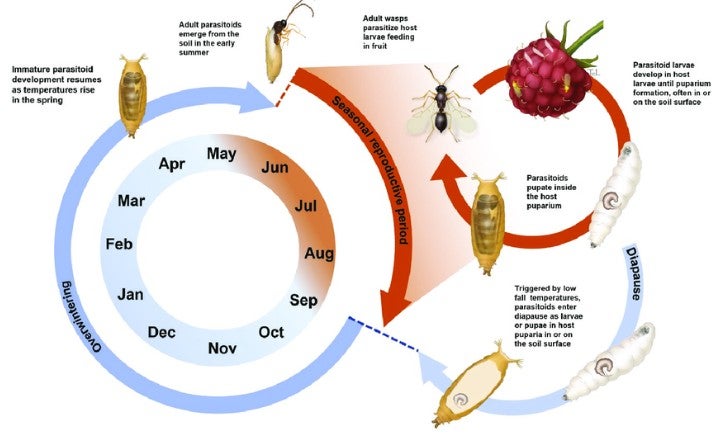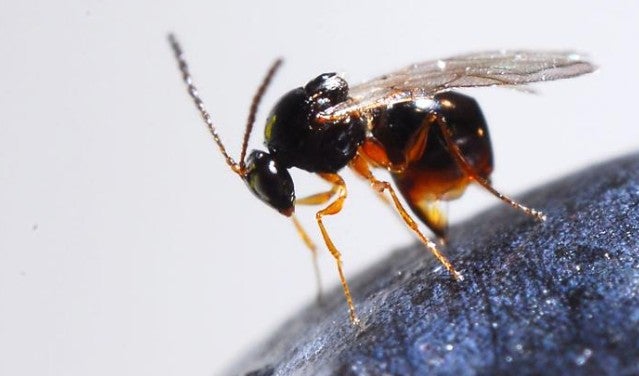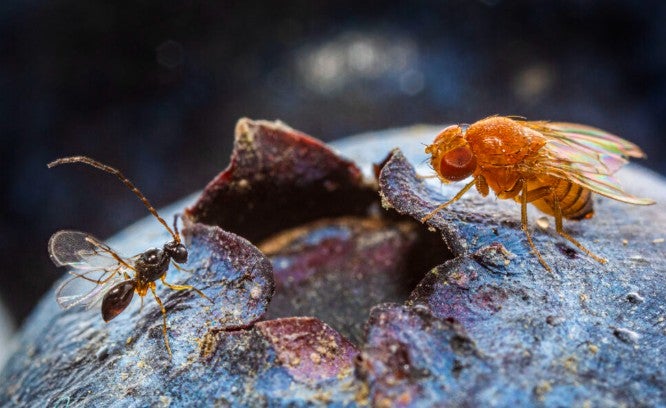Spotted wing drosophila
Spotted wing drosophila (Drosophila suzukii) is an invasive fruit fly native to East Asia. It was first found in the continental U.S. in 2008 in California, and by 2013 it was reported in most U.S. states. It is suspected that spotted wing drosophila (SWD) was introduced accidentally by shipping infested fruit from its native range. Spotted wing drosophila has a wide range of cultivated and wild hosts, including blueberry, raspberry, blackberry, grape, and other small soft skinned berries. Unlike other vinegar or fruit flies, SWD oviposits, or lays its eggs, in ripening fruit that is still on the vine, rather than fruit that has already ripened and dropped off the vine. Because of this, they have the potential to cause severe economic loss. Not only do the flies themselves cause significant damage, but there are often other issues that accompany a SWD infestation. The female has a serrated ovipositor which leaves behind a large oviposition scar that other pests and fungi can use to infest berries.
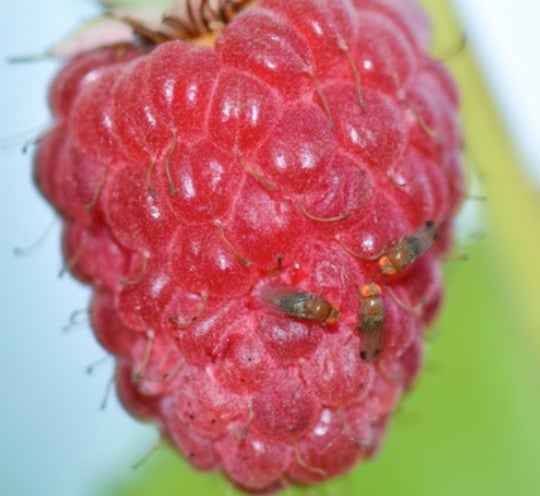
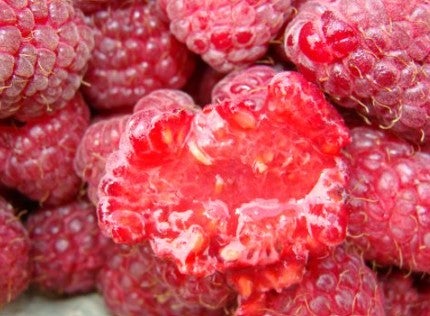
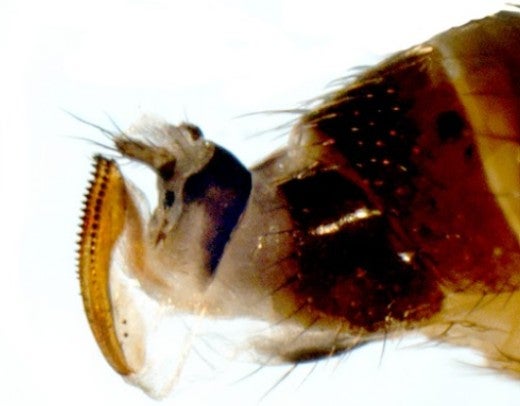
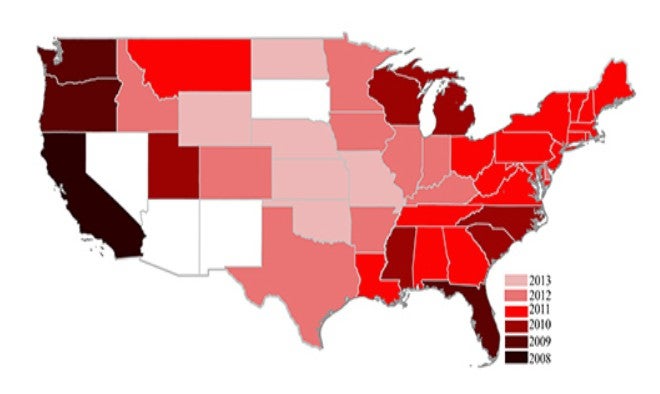
Identification and Signs of Infestation
Spotted wing drosophila are small vinegar flies that are orange-brown in color with red eyes. Males have a gray spot on the tips of their wings, while females do not. Females have an enlarged abdomen and a serrated ovipositor. The SWD life cycle is incredibly fast, only taking about a week for a new generation to be created, which means they are able to quickly create an infestation. They are estimated to have 10 generations per year in the U.S. depending on climate. Colder areas will have fewer generations and warmer areas will have more generations.
Some signs of a SWD infestation include oviposition scars, mushy berries that are still on the vine, and maggots in or on the berries.
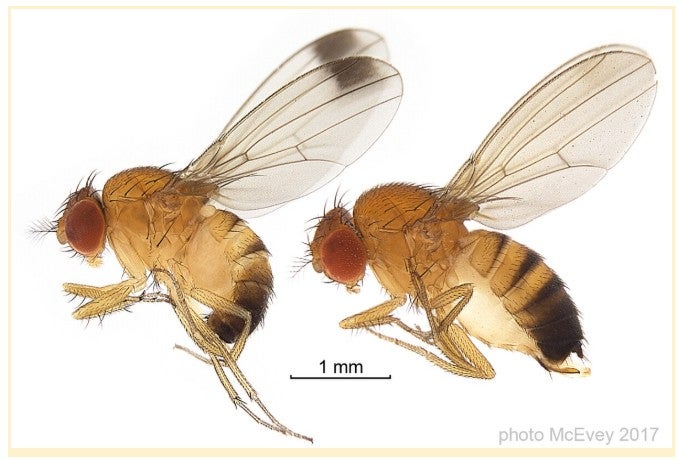
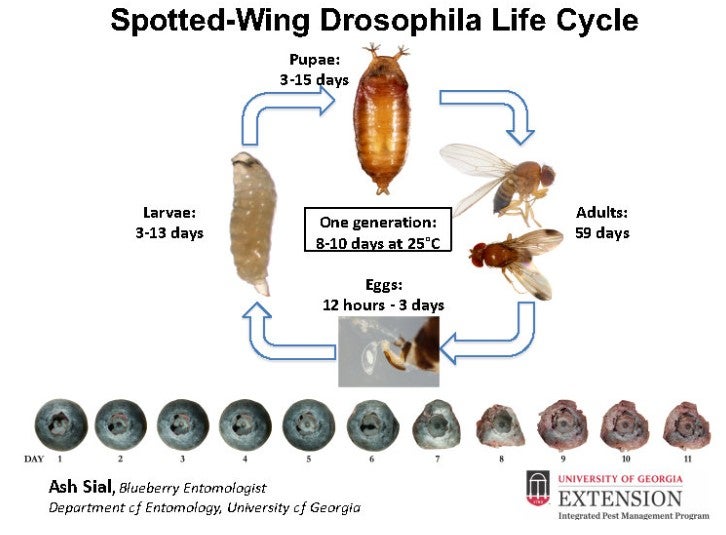
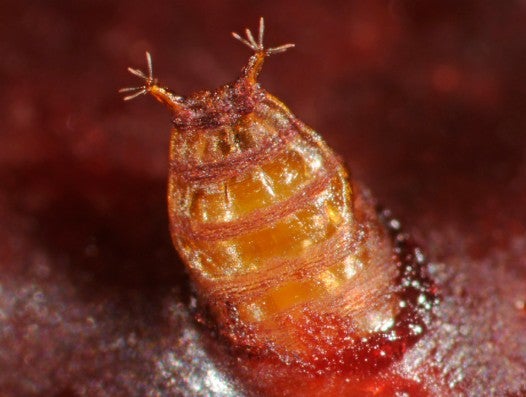

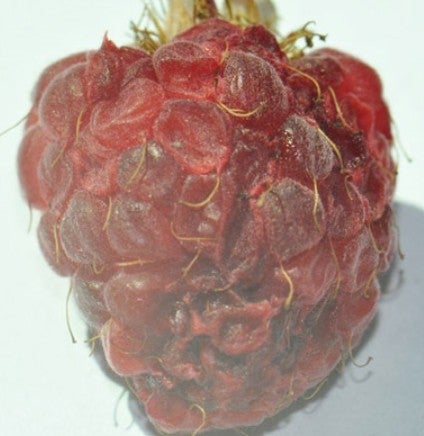
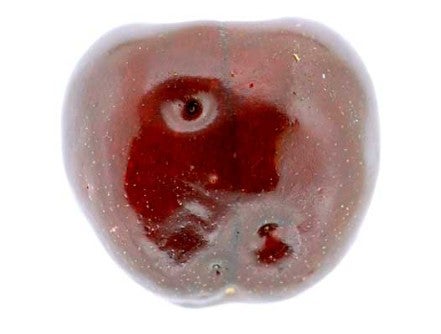
Management
Using pesticides on crop plants will kill SWD, however, this is not a long term solution. Pesticides will also kill beneficial insects and potentially harm small mammals and birds. Wild berries surrounding the crop are a reserve population which will continue to infest cultivated plants. Biological control is a good long term management strategy for SWD. A biocontrol agent is host specific, so it won`t harm any native species, and it will impact populations in both cultivated and wild berries.
In the summer of 2024, 2,701 G. kimorum were released on farms in southern Rhode Island with successful recovery of G. kimorum that same summer. Along with the G. kimorum that was recovered, an adventive parasitoid was also discovered, Leptopilina japonica. Leptopilina japonica is an adventive parasitoid, meaning that is was accidently introduced likely at the same time as SWD. Ganaspis kimorum and L. japonica are morphologically nearly identical and are impossible to differentiate without a powerful microscope or genetic analysis.
The URI Biocontrol Lab is working with RI fruit growers to introduce SWD parasitoids throughout Rhode Island. If you are interested in participating, please reach out to Lisa Tewksbury (lisat@uri.edu). We will use this web page to provide updates on the SWD biocontrol program.
